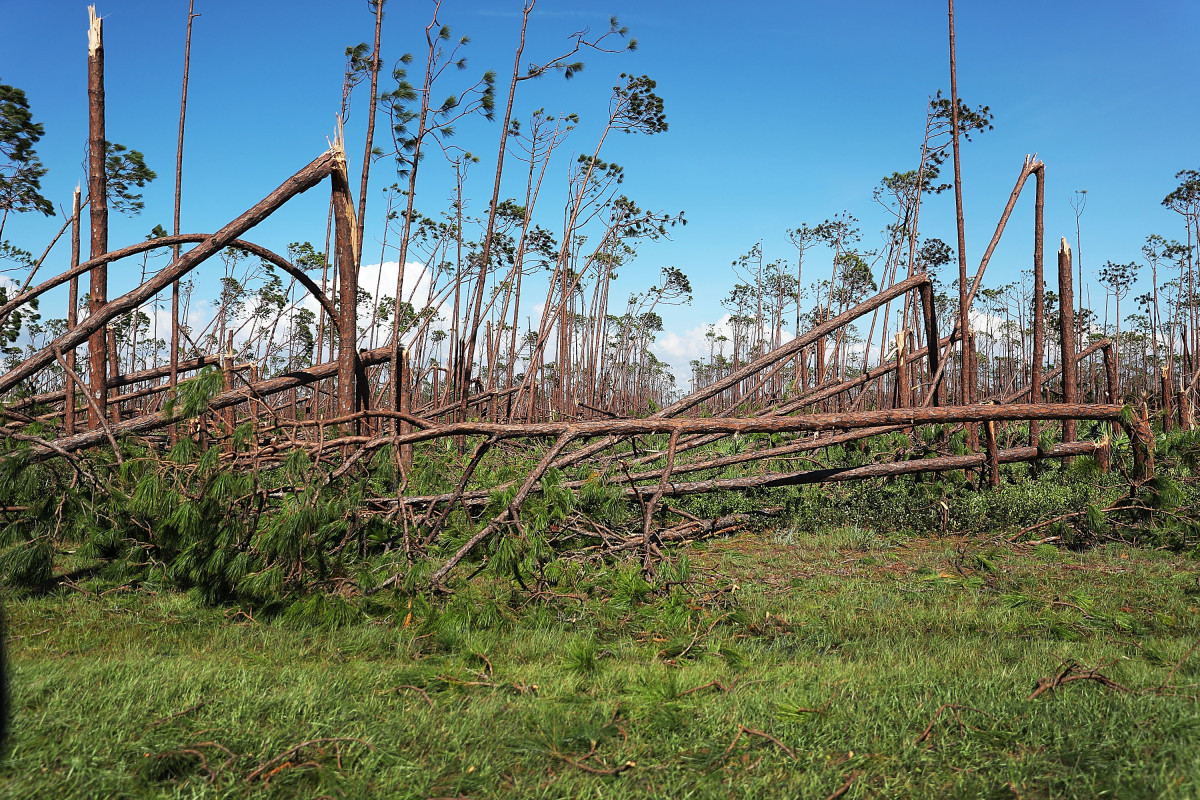
Forestry officials expressed concerns Tuesday that Northwest Florida communities still struggling from a deadly hurricane in October will soon face the threat of massive wildfires and flooding.
Depending on how much debris isn’t cleared or picked up, the state could face costly new disasters, Florida State Forester Jim Karels warned Gov. Ron DeSantis and members of the Cabinet — Agriculture Commissioner Nikki Fried, Attorney General Ashley Moody and Chief Financial officer Jimmy Patronis.
“Without being able to clear that land, the fire threat is, California doesn’t have this kind of fire threat,” Karels said. “If we have three weeks without rain and a windy day, we’re ready to go.”
The region sustained massive timber damage in Hurricane Michael, which made landfall Oct. 10 in Mexico Beach as a Category 4 storm and then roared through the Panama City area and largely rural Panhandle communities into Georgia.
Karels noted that when the downed wood dries, communities will face a significant fire threat, as once well-managed forests have become impassable for wildfire vehicles.
“That catastrophic fire in these kinds of events mean big aircraft that I’ve got to bring in under federal contract,” Karels said. “You could see fires that are running $10 (million) to $100 million, similar to the West, if we don’t get rid of the debris.”
Karels also warned that as the downed timber dries, the region could face the proliferation of southern pine beetles, which attack damaged and stressed trees.
About 90 percent of the 72 million tons of debris created by Michael is expected to remain on the ground after the storm.
The entire debris total is considered 10 times what was left by Hurricane Irma, which hit far more areas of the state in September 2017. It would need the equivalent of two-and-a-half million log trucks to remove, Karels estimated.
Just removing trees from state waterways has cost the state $19.4 million, a dent in the estimated $167 million needed to fully clear the waters, said Barbara Goodman, a deputy secretary for the Florida Department of Environmental Protection. Another $8.6 million has been spent on recovery activities at state parks, where the restoration work is projected at $55 million.
State park cleanup efforts after Irma and Hurricane Matthew in 2016 reached a combined $40 million.
A positive is that rainy weather the Panhandle has experienced since fall is keeping the downed timber damp. However, some flooding is already posing a risk to structures and roadways.
“Waterway debris is acting as a beaver dam that would and is causing flooding that is impacting critical infrastructure,” Goodman said.
Goodman said that even though an estimated 110,000 cubic yards of debris have been removed from state-owned waterways, flooding has already impacted Highway 20, which runs east-west through the region where Michael hit.
Goodman noted that waterways often show only a few downed trees sticking up, comparing the exposed timber to tips of icebergs.
“Down trees have also restricted navigation of waterways, posing safety hazards and limiting recreational activities,” Goodman said.
Last week, Northwest Florida lawmakers promoted a $315 million proposal (SB 1610) that would make loans available to local governments impacted by Michael and would set up a task force to determine additional state assistance for the storm-battered region.
The storm devastated the region’s important timber industry, which accounted for $1.3 billion of the storm’s $1.5 billion in agriculture damage.
House members from the Panhandle have filed nearly $1 billion in requests to help with the aftermath of the storm.
So far, about $1.2 billion has been spent by the state to help with cleanup efforts, and local communities have used up their budgets.
Patronis, a Panama City Republican, said he hoped any legislative relief can be approved before the 60-day session ends in May.
“Local county commissioners right now are looking at stacks of bills in front of them, and they’re trying to figure out, ‘what can I pay, what I cannot pay,’” Patronis said. “Knowing you’ve got $100 million worth of debris bills that have to be paid, it gives these men and women sleepless nights.”
Not all the costs will be handled by the state and local governments.
On Sunday, DeSantis announced the state received formal notification that 45 days of debris removal will be fully covered by the Federal Emergency Management Agency.
The state initially was approved for five days of 100 percent debris-pickup and relief.
___
Republished with permission of the News Service of Florida.



